#Conlang
Text
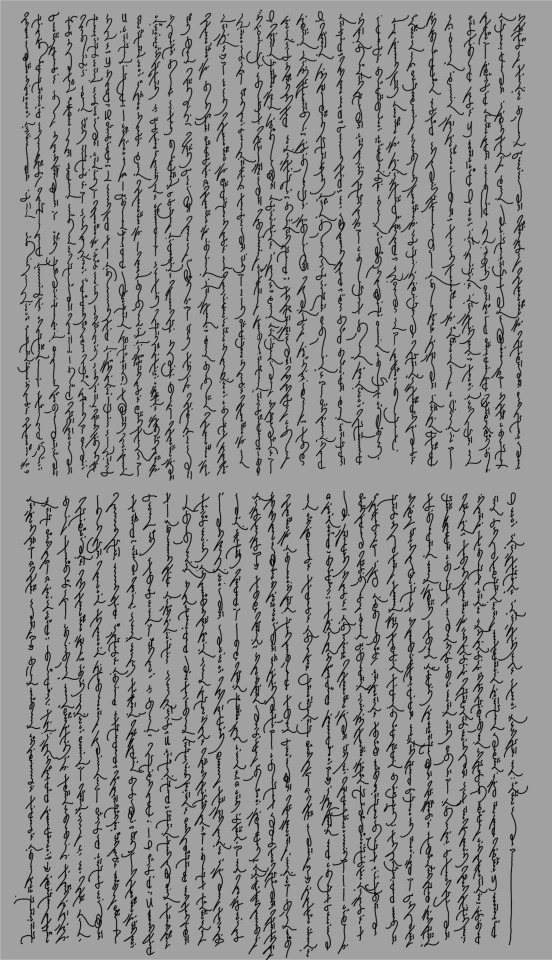
#conlang#constructed language#translation#conscript#constructed script#artlang#anni#arhanngi#conlanging#cat valente
39 notes
·
View notes
Note
perhaps.. we could get the :o frame of your blog header..
I'm not sure which from you mean since no one in my header animation has a mouth to make a :o face with. I'm just guessing you mean this one
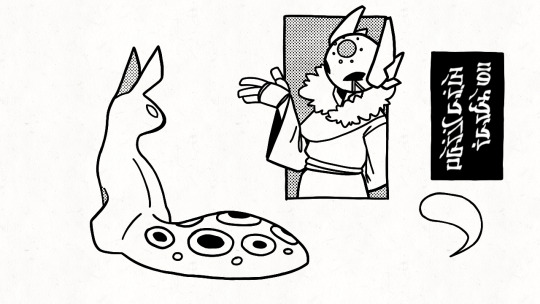
or this one?
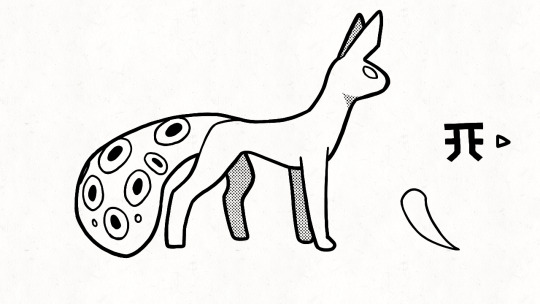
24 notes
·
View notes
Text

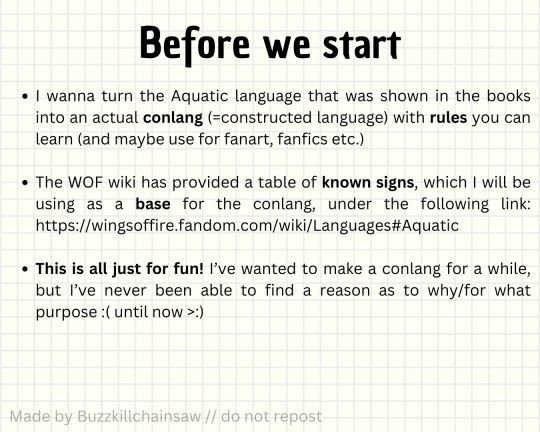

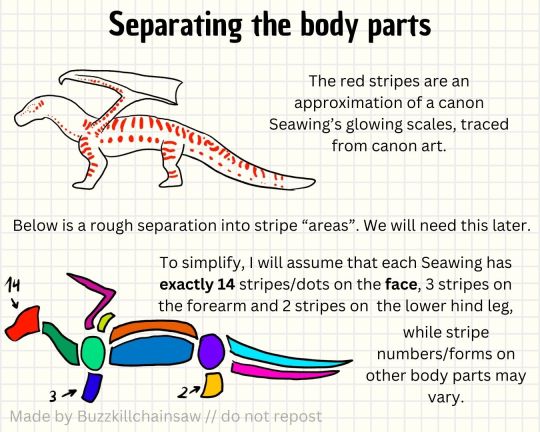


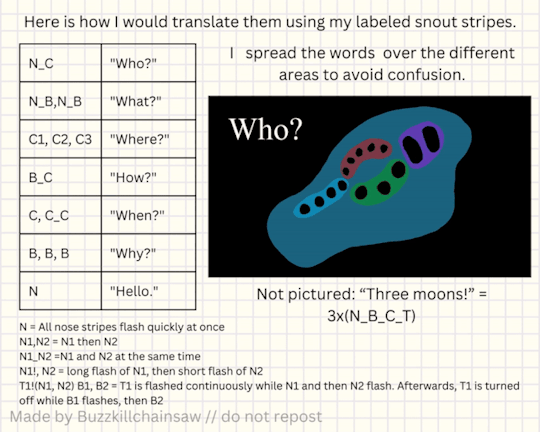
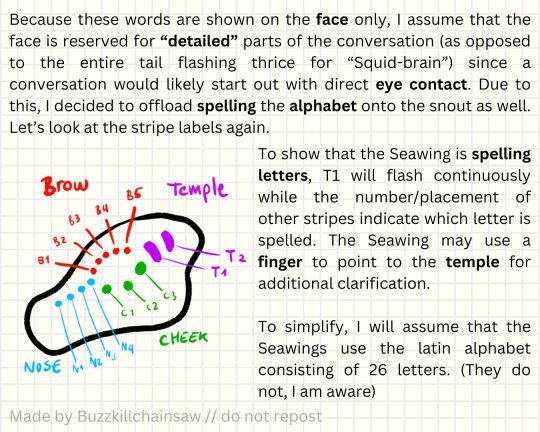
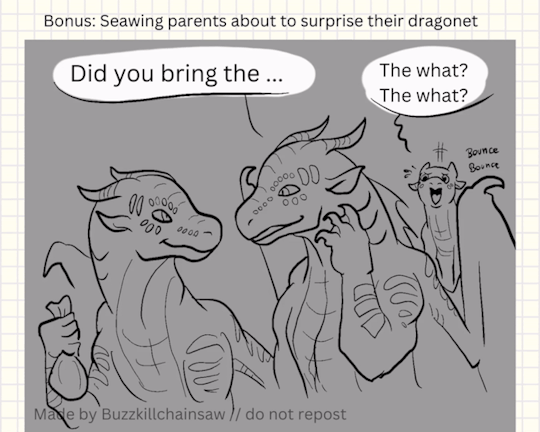
Yes I'm serious, no I'm not okay
(I'll be tagging this and further parts as #buzzkill aquatic so feel free to use that tag too if you use my aquatic expansion in your art/animations/fanfics etc)
Next part (tail edition):
#buzzkill aquatic#wof#wings of fire#seawing wof#wof seawing#seawing#aquatic#conlang#dragon#lore#worldbuilding
3K notes
·
View notes
Text
The Ts'íts'àsh (Firish) Language from Elemental
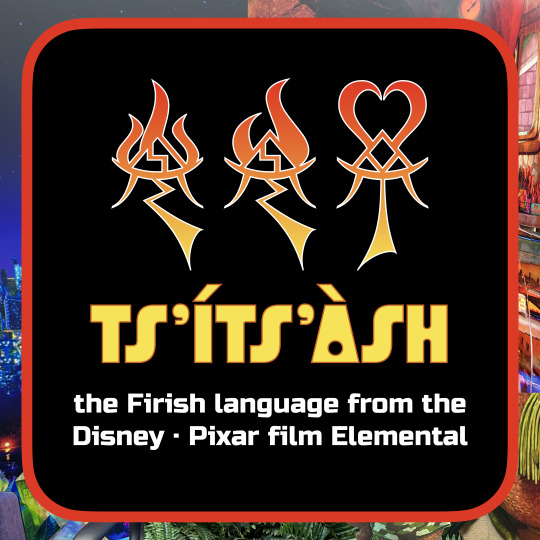

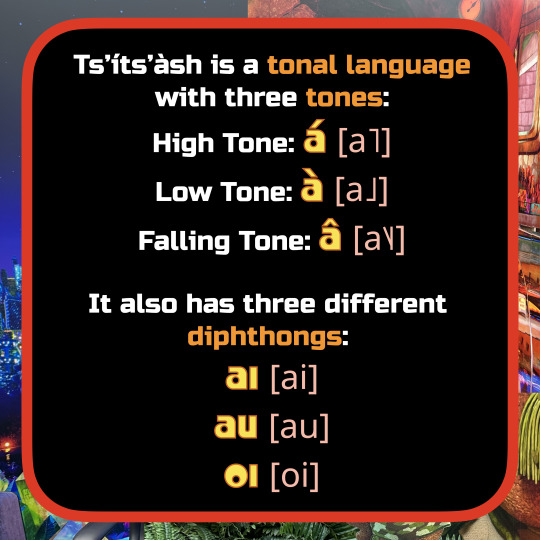


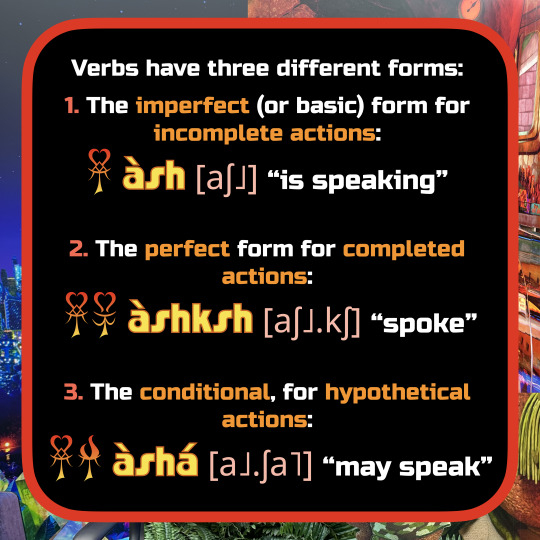

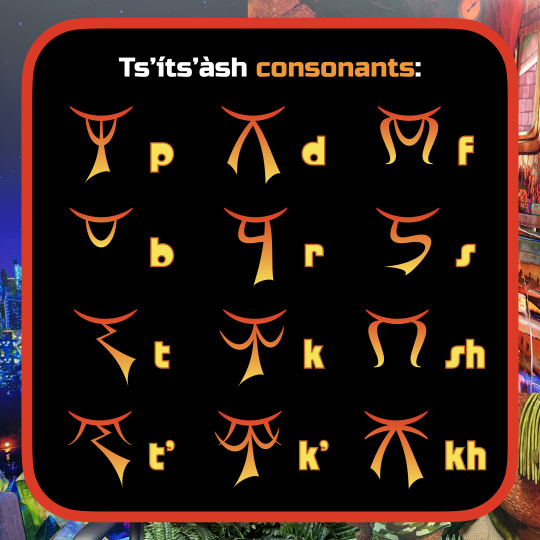


Ìf báì!
Jessie Sams (@quothalinguist) and I created a language for Pixar's latest film Elemental. We created both a spoken language and writing system that are used in spots throughout the film. It's out today, so if you watch it, see if you can spot any of it! We had a lot of fun creating a language the requested "sound like fire". A tough thing to do with a human mouth, but we had some fun with it! Some language highlights:
Ejective consonants
No nasals
Fricative nuclei
Fluid (ha, ha) case system
Glyphs that resemble braziers
If you check it out, we hope you enjoy it!
3K notes
·
View notes
Text
2K notes
·
View notes
Text
kind of obsessed with the conlang invented by 12th century composer and mystic hildegard von bingen. she called it lingua ignota and just sort of never explained why it exists or what it’s for? like. girl. why did you do this
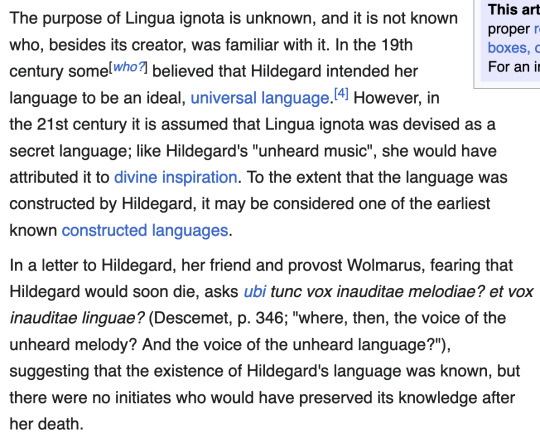


in case you're wondering what was up with her, like, in general, she was an abbess who was (1) politically influential, (2) chronically ill, and (3) plagued by visions.
but like seriously girl WHAT was the conlang for. TELL ME
#hildegard von bingen#did u know theres a bardcore artist called hildegard von blingen?#cw religion /#shaoniposting#conlang#linguistics#history
5K notes
·
View notes
Text
Oh also -
I got tired of making up my own inconsistent runes in pieces involving magic, so I made my own conlang alphabet!
I used to make these all the time when I was a kid (ty Artemis Fowl) and it was fun going back to that root.
Feel free to use/translate my latest pieces ♥
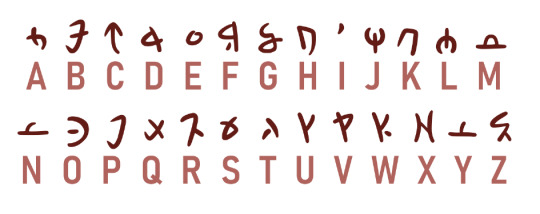
544 notes
·
View notes
Text
noticing as I learn different languages I tend to think using the shortest word from any of those languages, so for example instead of "this is" or "dette er", I'll just automatically think "c'est"
So my proposal is a creole of every language in which we find the shortest syllabic way to say every single word and speak at maximum efficiency
#toki pona is invited#toki pona#english language#language learning#language#conlang#langblr#french#norwegian
6K notes
·
View notes
Photo

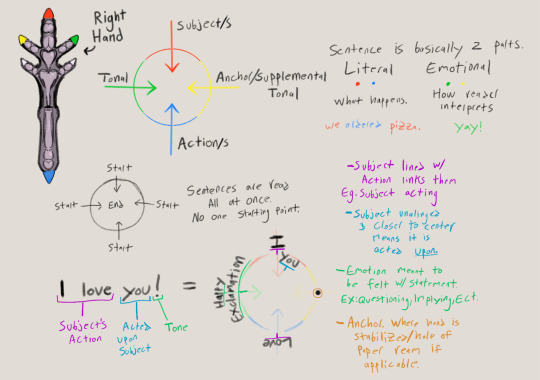
Wanted to figure out how chimera’s wrote and ended up starting on their written language proper. MASSIVE info dump below!
Writing
They write using four fingers of one hand, usually the right, coated in ink. Think like a stamp almost. The three middle fingers draw with the tips of the teeth whilst the thumb will alternate between tip and back. All words are written simultaneously inward. The remaining fingers grip the source of ink, usually a length of hardened pigment only wetted on one side OR those who write often could invest in a pen. A pen for a chimera is a fanning brush saturated with ink that the writing teeth brush through when needing to reink. It allows for much faster wetting of the teeth, but can be messy when learning or refilling.
Most chimera are right handed but left handed individuals exist, they will simply need to learn to use the two fingers opposite the middle in reverse of how someone who is right handed would! Luckily all fingers can move pretty independently of each other and it is an easy task. As chimera mostly communicate through direct broadcast most find the written word lacking, so it is a common occupation among Chimera to write for others. It is an impressive skill to eloquently convey ideas/feelings through writing. Though their language set up lends to it MUCH more than others.
The Nitty Gritty
All subject to change as this is very first drafty.
Chimeric is a logographic language, there is no set alphabet and all ‘words’ stem from symbols representing things and ideas. Sentences are kind of two sentences atop one another, with one being the literal and the other the reactionary. It is read from out to in and sentences are written in a circle divided into 4 quarters. We’ll start with the top moving counter clockwise.
Quarter 1 (Red) is the subject area, now subjects function the same as nouns for the most part, people, places, and things. But something important to note is that there must always be an ‘audience’ for the words being spoken. An audience basically means pronouns though they are a lot more encompassing with: I, You, Us, Them, Them excluding me/you, Us excluding you, Everyone, and a bunch of others. These are all acceptable audience subjects to top off your sentence. For instance you wouldn’t say “This pizza tastes good!” you would instead say “I enjoy the taste of this pizza” or “Everyone enjoys the taste of this pizza” the opinion/emotion needs to be applied to a source to make sense grammatically.
Quarter 2 (Green) is all about emotions and opinions. Chimeric language is an exchange of ideas but also importantly emotions and feelings. Q2 is dedicated to how the sentence is supposed to be interpreted or felt by the reader, as obviously in ‘spoken’ chimeric speaker and listener technically feel the same about what is currently being said. Listener opinion is very distinct from speaker and in writing the speaker takes priority. So for example the statement “Who finished the box but left it in the pantry?” would instead have to be translated into something akin to “I am pissed and questioning who had the audacity to finish the box and did not care enough to remove it from the pantry thus leaving me to find it and become disappointed?” Basically chimeric lends itself to very long translations due to their feelings.
Quarter 3 (Blue) is the action section of the sentence. The verbs if you will. This is where things are happening and is VERY tied in with Q1. Subjects in Q1 and Q2 will be linked together with lines that follow the same slice through the circle.
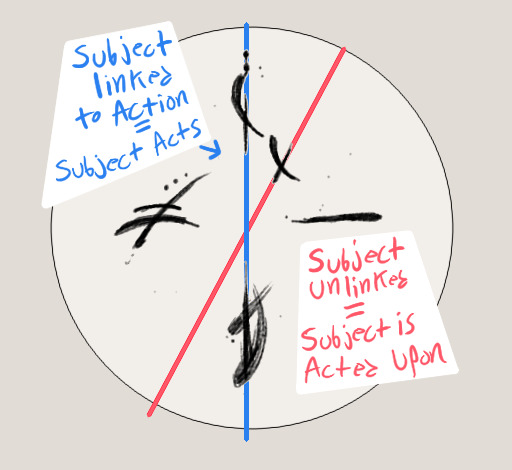
When a subject is linked to an action that means that the subject is the one performing the action, whereas subjects closer to the center and unaligned with an action are what is being acted upon. Like with the audience conundrum though an action needs a subject to actually act, whether it is an individual/s or an object or place. This is usually the least word heavy portion of the sentence as it is almost supplemental to Q1, and in contrast to the thin, crisp lines of the other quarters, Q3 will often be smudgey and more messy due to being written mostly with the back of the thumb.
Quarter 4 (Yellow) is generally not going to have any words written there, as it functions as the anchor point for the hand. The outmost finger rests here on the page to stabilize the hand as it closes during writing. When writing in a ream of papers this is where the hole to hold them all together is punched through. However in modern fanciful writing styles Q4 is also used as a secondary emotional quarter. This style will use Q4 as the reactionary emotion of the reader, more so the expected reaction and emotion from the reader. This is an EXTREMELY class based writing style and it is a GIANT NO NO to write like this for someone of higher status to read. Typically only Clan heads will freely use this writing style, especially towards each other lmao. The writing style of the passive aggressive power struggle.
All together Quarters are read at once! And I mean that there is no one word the chimera will start with. Every word of the sentence is absorbed at the same time, no following along a line like how I’m currently typing. But what indicates the order of which things are meant to be perceived is how close they are to the outside of the circle. Things closer to the center come later in the sentence and will be understood to be lower in the hierarchy of words. However only subjects and actions are directly linked to each other, emotion/opinion words are to have a more natural seep throughout the entirety of the sentence with only a loose idea of where they are to be felt. In this way while a subjects actions may be concrete, the writers feelings about them are more fluid and organic.
Chimeric conlang yay! I wanted to make modern Mirum script but decided I needed to start at the roots. So technically two written languages originate from Mirum, but they are extremely similar with one directly branching from the other. Chimeric is the original and Miran is the derivative, they mostly share characters but their sentence structure is different. Chimeric keeps the circular structure whereas Miran is a zigzagging horizontal and completely drops quarters 2 and 4. Leading to modern Miran being a very literal language vs Chimeric’s emotion heavy focus. But if you know one you can pretty much read the other, albeit with some culture shock.
#now i just have to make all the symbols hahaaha#chimera#mirum#conlang#worldbuilding#fantasy#language#chimeric#art#text#no true north
2K notes
·
View notes
Text
There should be a conlang community but for math. I wanna see counting with factorial base systems and people make up symbols for increasingly useless numbers. Maybe this can make some calculations more intuitive and others much more cursed.
720 notes
·
View notes
Text





Tigers are solitary hunters with a presence in Firish folklore. They can quickly ascend trees by attaching their fire to trunks and shooting along them.
Firefowl pick at seeds and burning insects. They gather in small flocks with equal populations of males and females. The smaller and brighter burning males compete for mates through displays of their sustained, energy-intensive raised temperature.
A firefowl egg appears as a dense charcoal with an internal ember, which ignites and consumes the egg within days, forming a new fowl.
The Tsí’tsà’sh word for ‘boat’, êbshà, originates from the name given to the shape of a beetle’s shell. It’s an orange-color orange-fruit situation. Burning boats are named as such for their flecked elytra and two whirling antennae.
Red princes will occasionally emerge from the charred forests to roam villages. They are only rivaled in strength by the tigers.
The Firish horse is short and stocky. When not at work, it will graze and clear dried vegetation to allow for new growth.
698 notes
·
View notes
Text
I couldn’t take seeing that post an eighth time so I fixed it
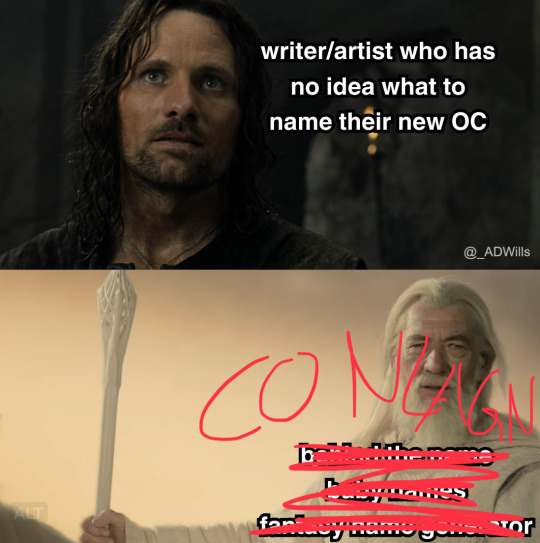
346 notes
·
View notes
Text
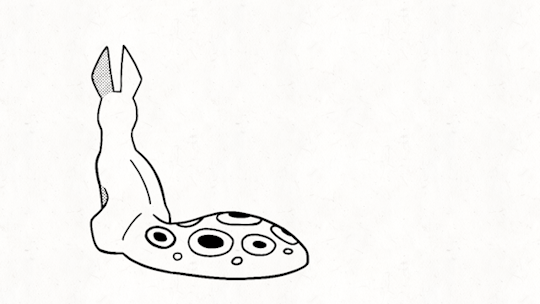
"Friend, there are scavengers watching."
Suns gives Spearmaster a heads up. The text is in my own conlang that I'm using as a Reconstructed Ancient. It reads "!A toganggan .Chiengga mulngjer"
This was originally a practice sketch animation to figure out how to animate quadrupeds but it became a much broader practice piece.
1K notes
·
View notes
Text
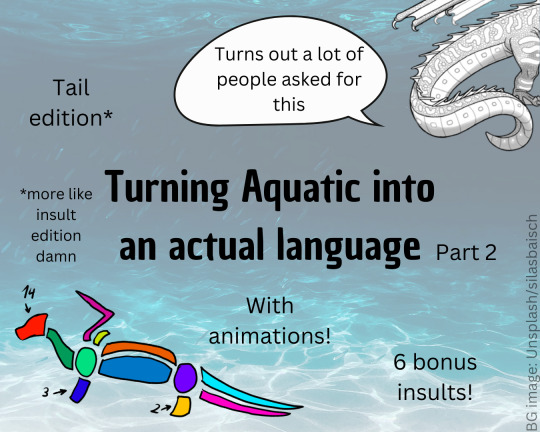




Tagging this and any previous/further parts as #buzzkill aquatic. Feel free to use that tag whenever you use my aquatic expansion in your own work (not mandatory)
1K notes
·
View notes
Note
Hello there! I was wondering if you could possibly translate this quote: (I know it's a different fandom, but I was wondering if you could translate it anyways. I think it would be neat to see it in High Valyrian.)... "Not all who wander are lost."
So listen… I know this wasn't the intent, and I know that you're kind of standing in for tons of people from my past, but like… When people ask to have something translated, do they really not give any thought to the grammatical complexity of what they're asking for? And 100% this is not just you, but like… Embedded clauses, relative clauses, counterfactuals…
Something I didn't realize till I started creating languages for a living is translation is my least favorite part of language creation—and it's what I spend the most time doing.
Okay, so, "Not all who wander are lost". Good lord. First, there's "lost", which has a literal and metaphorical meaning in English. Absolutely no idea if this would translate in High Valyrian, and I'm pretty sure I don't have a word for "lost", and I don't even know how to go about creating one. Spanish perdido essentially comes from "wasted" or "squandered". We know where English "lost" came from. There actually is a word for "to lose" in HV, but it's to lose a battle. Doesn't make sense to use it here. So I'm going with something that kind of evokes that mists that surround destroyed Valyria and use the locative of "fog", so to be sambrarra "in the fog" means "to be lost".
I also don't (or didn't) have a word for "wander", but I made a derivation based on one of my favorite words, elēnagon, which means to oscillate or swerve. Jorelēnagon now means "to wander". Seems to fit.
And that was the easy part. A relative clause is something like "The dragon that I saw is big". "Whoever I saw is big" also features a kind of relative clause—an indefinite relative clause. These things are absolute murder to create. But no. It's not just that. It's a modified indefinite relative, because it's not "Whoever wanders is lost", it's "All who wander are lost". BUT IT'S NOT JUST THAT. It's negated on top of that. NE. GA. TED. And not just in the usual way: It's the Mothra fumbling quantifier that's negated. It's not whoever wanders. It's not all who wander. It's NOT ALL who wander. This is like my nightmare—being asked to translate something like this. This is giving me flashbacks to season 1 of House of the Dragon when they asked me to translated "Would that it were", as if that was some reasonable thing for a human being to say in any language ever.
Anyway, if you type "indefinite relative clause" into my High Valyrian grammar, you come up with nothing, because I always forget to write down how the hell I decided to do them. I think because I have both relative adjectives and pronouns that I can just use the damn pronouns by themselves. God. "Not all…" Are you kidding me?! You know High Valyrian has a whole collective number to handle "all", right? What, do I just negate that? Will the meaning be the same as a negated quantifier?! Like it's [[not all] who wander], right? And you can bracket like that because they're all separate words. But what if "all who" is one word? What then?! BECAUSE THAT'S WHAT IT IS!
(By the way I just added a sentence to my grammar that includes the phrase "indefinite relative clause" so I can search for it. It's not like this wasn't written up, but I honestly probably forgot what the term was when I wrote the section the first time and I never revisited it.)
Okay. I'm calm and cool. So. Returning to the translation. There are two types of relative pronouns: One that refers to people or things, and another that refers to concepts or ideas or places. We're talking about people here, so we need the first one. And we need it in the collective. That's lȳr. Leaving the negation aside, this can be translated fairly easily:
Jorelēnus lȳr sambrarra ilza.
Okay, that's "All who wander are lost". I chose the aorist subjunctive for the relative because it's like "anyone who may wander"; I think it makes sense. Lȳr is grammatically singular, so it triggers third person singular agreement in both verbs. Since we're using ilagon as a locative copula here, I think (think) the present tense makes the most sense. So that is "All who wander are lost".
Now how the flarking frump do you say "not all" when "all who" is lȳr?!
So since lȳr is a pronoun it can be modified with an adjective, which would like like this:
Jorelēnus dōre lȳr sambrarra ilza.
But the problem with that is I don't think it gives us the intended meaning. I think that means "None who wander are lost", and that's not what the intended meaning is at all. It is basically "Some people who wander are indeed lost—perhaps many of them—but some of those who are wandering are not, in fact, lost". This is also why you can't negate the matrix verb. That would mean "Anyone that might be wandering is not lost"—again, not the intended meaning. This is the crux of the whole translation: Negating the quantifier and not what the quantifier is modifying.
For that reason, the only thing I can think to do is to go to a much more prolix, and, frankly, un-Valyrian-like expression. This would mean taking the relative pronoun out of the collective, putting it back in the singular, adding in a quantifier, and negating it. That would be this:
Jorelēnus dōre tolvie lȳ sambrarra ilza.
Is that it? I honestly don't know. It is a translation; I'm not sure if it's the best translation. Another possibility is to re-translate it and say "A few who may wander are not lost". That would look like this:
Jorelēnusy lȳn sambrarra ilosy daor.
The pronoun is now in the paucal, which triggers plural agreement on both verbs. (And, by the way, thank goodness sambrarra is a noun phrase; it doesn't have to agree with anything!) And this is, basically, "A few who may wander are not lost".
I feel like the second translation is better maybe…? It feels more Valyrianesque. But I'm not 100% sure it conveys the same sense.
Anyway, I started translating this a little over two hours ago. That's what this takes. That's how long something this complex takes. Granted, it didn't have my full attention at all times, because I was watching Booksmart, but this was my second time watching it, so I didn't have to give the movie my undivided attention (though it had been a few years; there were bits I didn't remember). But yeah. Translation. My god. Like…why. Creating languages is fun. Translation is work. (And if it's not work, you're doing it wrong. Mic drop; soap box kicked.)
#conlang#language#valyrian#high valyrian#valyrian grammar#grammar#high valyrian grammar#translation#asoiaf#grrm#hbo#hotd#house of the dragon#got#game of thrones#all the flipping tags#booksmart
460 notes
·
View notes
Text
ok ok i gotta share this with yall, not sure if this is common knowledge among ling nerds but if not the best site on the internet is ipa.typeit.org/full
it has almost every ipa symbol you could ever need, quick-access vowel, consonant, and diacritic charts for reference, shortcuts for everything that are easily learnable, and on windows, you can get the app to make the shortcuts work everywhere (the site works just fine too tho)
hella cool, go check it out, i promise i'm not sponsored or anything it's just been a lifesaver for me as someone who consistently has to type in ipa
262 notes
·
View notes